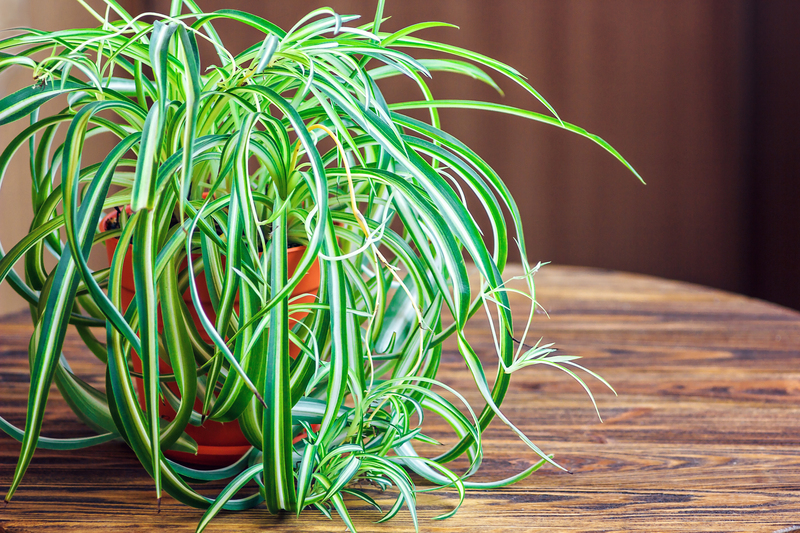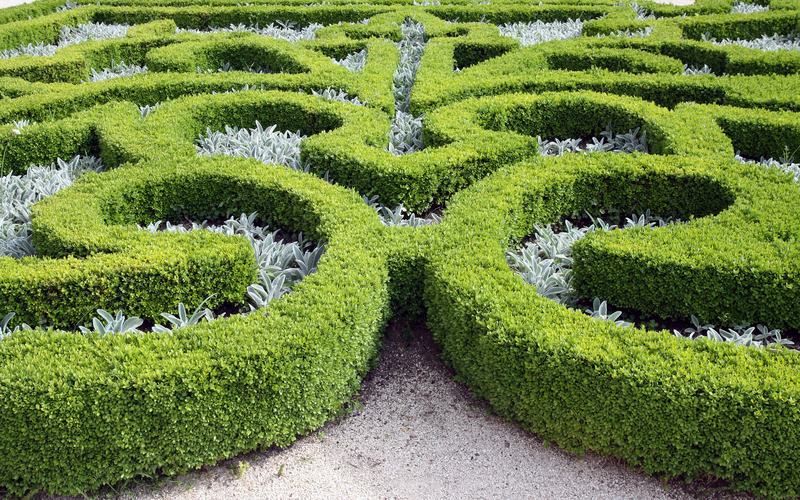The beauty of growing plants in containers
Posted on 18/09/2025
The Beauty of Growing Plants in Containers
Container gardening has gained immense popularity among plant enthusiasts, urban dwellers, and horticultural novices alike. With the flexibility and versatility it offers, growing plants in containers is more than a mere trend--it is an art form and a practical solution for those who seek greenery in limited spaces. This article will explore the many facets of container gardening, shedding light on its benefits, challenges, design tips, and best practices to let your container plants thrive.

Why Grow Plants in Containers?
The appeal of planting in containers is evident, whether you have a sprawling backyard or a small apartment balcony. Here are some compelling reasons that make container gardening a favorite choice for plant lovers:
- Space Efficiency: Perfect for urban environments or homes without access to a garden.
- Mobility: Container plants can be moved to chase the sun, avoid frost, or simply refresh the look of your space.
- Soil Control: Manage soil quality, drainage, and fertility with ease, sidestepping poor native soils.
- Pest and Disease Management: Fewer soil-borne diseases affect container plants, and they can be isolated if problems arise.
- Accessibility: Ideal for people with mobility issues, as containers can be placed at comfortable heights.
- Decorative Versatility: Endless combinations of pots, plants, colors, and styles to complement any decor.
Types of Containers for Growing Plants
Choosing the right container is fundamental to the health and beauty of your plants. Let's examine some popular options:
1. Clay and Terracotta Pots
Renowned for their classic appearance, clay pots are porous and excellent for plants that prefer drier soil, such as herbs and succulents. However, they may dry out quickly in hot climates.
2. Plastic Planters
Lightweight and affordable, plastic containers retain moisture better than clay and come in a wide array of sizes and styles. They are ideal for container gardening beginners due to their versatility.
3. Ceramic and Glazed Pots
With vibrant colors and glossy finishes, ceramic containers add elegance to any space. They are heavier and offer excellent insulation but may be prone to cracking in cold weather.
4. Wooden Boxes and Barrels
Wooden containers blend naturally with outdoor settings and offer excellent insulation. However, ensure your wood is rot-resistant and avoid treated woods, which can contain chemicals harmful to plants.
5. Recycled and Upcycled Containers
From old boots to tin cans, nearly anything can become a plant pot if it provides adequate drainage! Upcycling not only reduces waste but adds a personal, creative touch to your container garden.
Best Plants for Container Gardening
What can you grow in containers? Almost any plant! However, some varieties thrive exceptionally well in pots and tubs:
- Herbs: Basil, parsley, thyme, rosemary, and mint offer year-round harvests and easy maintenance.
- Vegetables: Tomatoes, peppers, spinach, lettuce, and radishes are popular choices for home vegetable gardens.
- Flowers: Petunias, geraniums, pansies, and begonias lend vibrant colors and fragrances.
- Succulents and Cacti: Perfect for dry, sunny locations and low-maintenance gardens.
- Dwarf Fruit Trees: Lemons, limes, and figs can flourish in large containers with proper care.
- Ornamental Shrubs: Boxwoods and small conifers add year-round structure to patios and balconies.
Designing an Attractive Container Garden
Part of the beauty of growing plants in containers lies in creative expression. Here are key principles to help you design striking arrangements:
Choose a Theme
Whether you prefer a serene Japanese Zen garden, a cottage-style floral arrangement, or a modern minimalist look, your containers can reflect your style. Unify your space with color-coordinated pots or varied shapes for visual interest.
The Thrill, Fill, Spill Principle
This approach creates balanced and appealing displays:
- Thrill: Tall, eye-catching plants (such as ornamental grasses or cannas).
- Fill: Medium-height and bushy plants (such as petunias, coleus, or herbs).
- Spill: Trailing plants that cascade over the edge (such as ivy, sweet potato vine, or creeping jenny).
Color Combinations
Play with contrasting or complementary colors to create visual pop. Shades of purple and yellow, red and green, or a monochromatic palette can all be effective.
Height and Texture
Combine plants of varying heights and textures for dimension and interest. Blend spiky leaves with soft, trailing foliage and rounded flower clusters.
Essential Tips for Successful Container Gardening
While the joys of growing plants in pots are many, proper care is essential. Here are vital tips to ensure your container garden flourishes:
1. Appropriate Pot Size
Ensure your container is large enough to accommodate the mature root system of your plant. Overcrowding can stunt growth and increase the risk of disease.
2. Good Drainage
All containers must have drainage holes. Use gravel or pot shards at the bottom if needed and place saucers underneath to protect surfaces indoors.
3. Quality Potting Mix
Do not use garden soil, which can become compacted. Instead, invest in a high-quality potting mix designed for container plants, offering the right nutrients and aeration.
4. Regular Feeding
Plants in pots rely solely on you for nutrition. Use slow-release fertilizers or supplement with liquid feeds tailored to specific plant needs.
5. Water Wisely
Container plants often need more frequent watering than those in the ground. Water until excess drains out, and check soil moisture regularly. Self-watering pots can be a great investment.
6. Sunlight and Placement
Group sun-loving plants together and shade-lovers separately. Rotate containers periodically for even growth and adjust locations as seasons change.
Advantages of Container Gardening
- Flexibility: Easily move plants to protect from harsh weather or to redesign your outdoor space.
- Pest Control: Isolate or remove affected plants without disturbing your entire garden.
- Experimentation: Try different plant species without the commitment of altering your landscape permanently.
- Accessibility: Gardening at different heights relieves strain on your back and knees.
- All-Year Beauty: With seasonal swapping, your garden is never out of season.
Challenges of Growing Plants in Containers--and How to Overcome Them
Despite the countless benefits, container gardening is not without its hurdles. However, most challenges are easily managed with attentive care:
- Quick Drying Soil: Use larger pots or water-retentive gels if you have hot, dry conditions.
- Limited Nutrition: Feed plants regularly and refresh soil annually to prevent depletion.
- Cold Vulnerability: In cold climates, use frost-resistant pots or move containers indoors during winter.
- Pest Infestations: Monitor for pests and treat issues immediately to protect your plants.
The Aesthetic and Emotional Impact of Container Plants
Beyond their functional value, container gardens offer profound emotional and visual rewards. The simple act of nurturing a plant can provide relaxation, satisfaction, and a daily connection to nature. Windowsills, patios, and rooftops are transformed by the living art of potted greenery. Color, fragrance, and movement invite birds, butterflies, and pollinators into even the most urban spaces, enriching biodiversity and the daily experience of all who live there.
Container Gardening for Small Spaces
For those with small apartments or urban balconies, the magic of container gardening opens up a world of possibilities. Vertical gardens using stacked pots, wall planters, or railing boxes enable even the tiniest areas to burst with life and color.
The Joy of Personalization
Each container garden is as unique as its creator. From whimsical fairy gardens and kitchen herb pots to elegant orchid displays, the possibilities are infinite. Your choice of containers, plants, and arrangements becomes a reflection of your aesthetic and mood.

Getting Started with Your Own Container Garden
Ready to begin your journey into the beauty of growing plants in containers? Here's a step-by-step guide:
- Assess Your Space: Sun, shade, wind exposure, and available area will determine your container and plant selection.
- Select Containers: Balance practicality and beauty. Remember to consider material, size, and drainage needs.
- Plan Your Planting: Choose plants with similar sunlight and watering requirements to group together. Mix and match flowers, herbs, and ornamental foliage for variety.
- Prepare the Soil: Fill containers with high-quality potting mix. Add slow-release fertilizer or compost at this stage.
- Plant Carefully: Arrange plants according to your design plan. Water thoroughly after planting.
- Maintain and Enjoy: Check on your pots daily for water, pests, and deadheading. Reimagine your arrangements seasonally for year-round interest.
Conclusion: Savoring the Art of Container Gardening
The beauty of growing plants in containers is multifaceted--practical, decorative, and deeply satisfying. It brings nature to urban spaces, allows endless creative expression, and connects us to the cycles of growth and renewal. Whether you are a seasoned gardener or just beginning, tapping into the joys of container gardening will enrich your surroundings and your well-being.
Embrace the endless possibilities that container gardening offers--your perfect green oasis is just a pot away!
```


